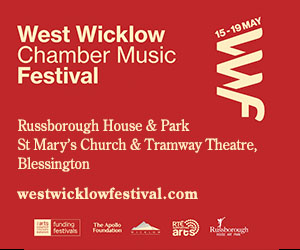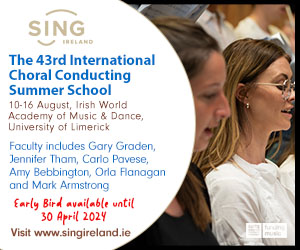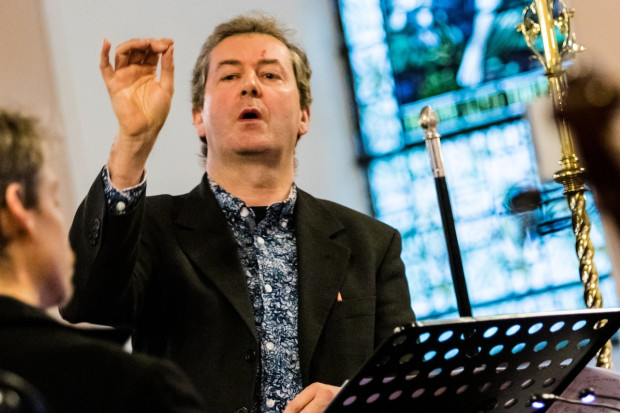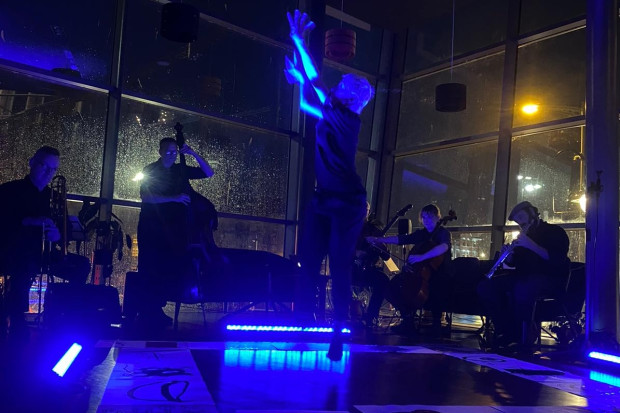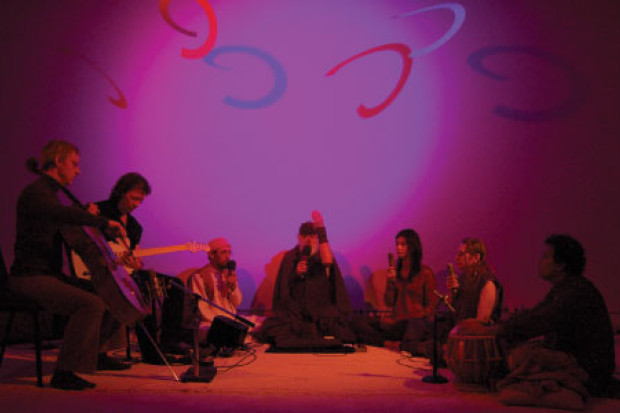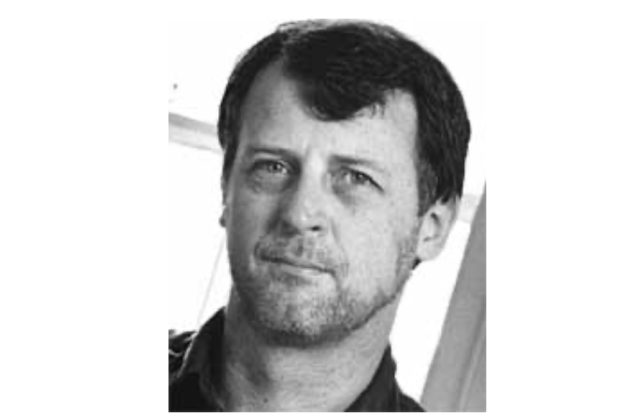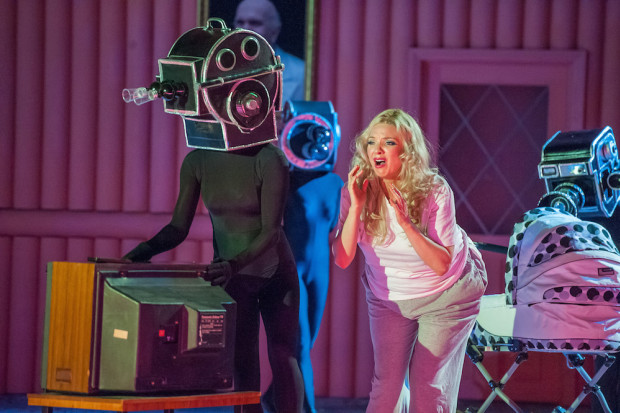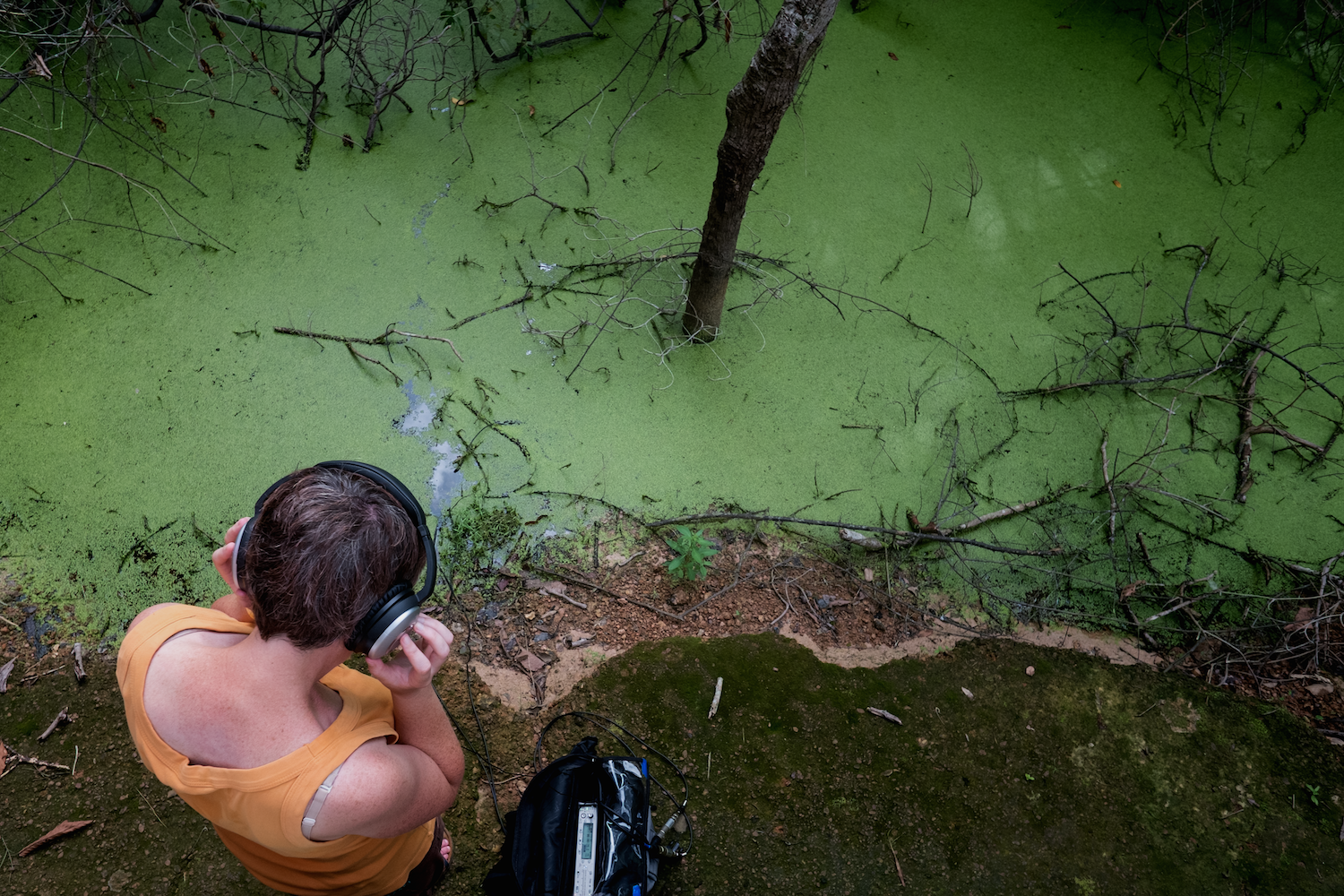
Karen Power making field recordings (Photo: John Godfrey)
The Boundaries in Music
We are all reviewers. These days, when a book is bought we might be asked to review it online. The marketers need us. We are the consumer, but we are also the product.
When you try to choose a product that involves some thought, whether a book or a washing machine, you often use reviews to help you reach a decision. But if you are online, the thought crosses your mind: who is writing, and why? Is it someone with a connection to the publishers/manufacturers? Is it somebody who knows very little about books/motors? Some hopeless case desperate for validation – a trainee writer? The next thing you think is: How can I find out which reviews are worthwhile? There are two separate problems tangled up together here. One is conflict of interest; the other is loss of quality.
For machines and tools, where reliability is important, there are still reliable reviews – you can tell them instantly because they ask you to pay! Which magazine and others ask for money before you can read on. But who reads on? There is always someone else who will do it for free. Incidentally, this writing is being paid for, so relax and enjoy.
In the arts there are additional problems. I am a composer, and in this piece I am going to discuss a CD from another composer, Karen Power. As we composers have found that no-one gets us – or can be bothered to get us – we find that the best writing is being done by colleagues. Do you think that makes any of us entirely happy? It’s a good thing artists thrive on discomfort.
Off kilter
But there are other issues concerning the difference between artworks and commodities that throw writing about music off kilter. A review of a washing machine that fails to mention cleaning clothes – but instead mentions how it missed a trick as it should be able to take dishes too – well you’d laugh, wouldn’t you? Yet a review of an orchestral piece once, lamenting a lack of adventure, suggested why not use DJ decks. Nobody laughed. Indeed how can you, in a world where an orchestra is frequently combined with singers, exotic instruments and objects, or laptops? What the composer might have liked, but didn’t receive, was some commentary on what was in the piece, and not what was missing, since that category is boundless. Is that wrong? This is the nub of the issue: artists and audiences are always being bombarded by the message that art should be (by way of a series of handy clichés in case you might struggle to think up your own words) ‘beyond definition’, ‘beyond boundaries’, ‘transgressive’, ‘ground-breaking’. To object to a lack of boundaries is, well, to step out of line. In music, the touchstone word is ‘experimental’.
(Of course that is all mostly in the world of arts-speak, arts discourse. Which is frequently nothing to do with arts practice. Arts practice is full of boundaries that dare not speak their names. Money, for starters.)
The serious point is: can we criticise works for not including things that are beyond their style/genre boundaries? In well-defined genre cases the answer is obviously not; it would be absurd to say that traditional music has a sad lack of seventh or ninth chords. A jazz reviewer might write that ‘the rhythm section was really cooking’ and everyone knows what that means. He (it usually is a he) won’t write, ‘why doesn’t the rhythm section sometimes include an electric kettle?’ But if a style is defined as ‘open’, the critical response may also become shapeless. If such a composer produces exclusively slow pieces, is it valid to question this? Maybe this is the genre that this composer has created, so to question it only shows the critic is ‘out of touch’. Criticism becomes nullified. When this ‘composer-defined genre’ scenario is pretty much the industry standard, as it is today, then it is no wonder that composers feel the critics have deserted them.
Real, living composers do not operate in a boundary free environment. Experimental music has been defined as music where the outcome is open. This actually means that there is more than one possible outcome. It does not mean all outcomes are possible and equal. However, it can unleash an approximate-ness of timing that can become an unwitting and repetitive stylistic marker. It’s also another thing that makes composing harder.
A strong musical mind
Irish composer Karen Power’s way of working includes a number of strands; her music is constantly searching, and experimentation is part of this. Her work ranges across improvisation, collaboration, scores with open qualities, and found sounds. It includes tape parts some of which include environmental sounds. She does not cram all these things into each piece. There are scored pieces for instruments without tape. There are tape pieces without instruments, or with them as a sound source. And many pieces combine the elements. She does not generally describe herself as experimental. Others do. Perhaps she sees the unease around the word, and also how it has become a tradition.
Her works are often created in a collaborative process of exploring the sounds possible with an individual player of an individual instrument, or a small group. By taking individual sounds of all kinds as the primary building blocks, rather than schema of rhythm, timing, or pitch, she successfully gets away from what Trevor Wishart called lattice-based thinking, in a most consistent and convincing way. It is uncompromising and confident music that creates a feeling of a strong musical mind behind the sound objects, with a strong editing kind of hand. She does not seem to be pushing the sounds into doing things against their nature; they are like characters dictating the course of the story. Her achievement under those conditions is admirable. Thus the music avoids any past habits of dramaturgy or psychological audience manipulation. And this is not to say that it lacks moments of impact. In fact, of the many composers around today who work in a similar way, her individual stylistic voice is one of the strongest and impactful, giving the listener a sense of performer-composer engagement that draws others in.
There are eight pieces on her new recording is it raining while you listen. They range over eight years’ work; from 2007’s fried rice, curried chips and a diet coke to forever ricefields of 2014 (both for tape, without instruments). You would expect to hear compositional progression in such a selection, and you do. But the strength of the compositional voice is consistent along this selection. What changes is the area of attention that the composer is interested in. In the last couple of years, she has turned attention towards listening to the natural and man-made environment, treating these as found sounds of almost numinous resonance. Her titles are always lower-case and whimsical, which is the only non-serious thing about the work, for example, hang on, I’m not ready for a pig yet and flies who dreamt of more than windscreens.
There are no weak pieces, but the challenges to the listener certainly vary, due to the degree to which the piece is sound art or composed music. forever ricefields is the least ‘composed’, i.e. it is an edit and collage of Loatian found sounds, while the fully instrumental (i.e. tape-free) title piece, is it raining while you listen, has some shadows of a formal scheme – nicely concealed, mostly. relocating elk…by train, for bass flute (played by Carin Levine) and tape, has a very unified atmosphere, while flies who dreamt of more than windscreens involves notable and well-judged contrasts of sound sources and morphologies, using four musicians from the Quiet Music Ensemble alongside tape sounds. With the colourful digestive palette of slugs we hear the SCAW duo dominate the soundscape, bass clarinet being lighter on extended techniques than the piano for much of the piece, with tape in a supportive role. Claire Duff, meanwhile, seems to inspire a forest of string-related sounds from the tape part in hang on, I’m not ready for a pig yet.
There are also things that an average listener might long for that her style so far omits. Through the selection as a whole, a desire may build up to have more variety of thickness and thinness of texture, e.g. layering, and sometimes of event pacing. There is a feeling that – compared with other genres – the works are slowish, with an ambling quality. The pieces do not forcefully seek to articulate a justification for their own extent. It is rewarding only if the listener can let go of predicting the course or desiring any particular change and instead become immersed in what emerges naturally. Thankfully, we are still miles away from self-indulgence. These issues come from the fact that this is art that is situated somewhere between music and sound-art. Within its own world, each work is an invitation to a deep listening experience.
is it raining while you listen is on Farpoint Recordings. The musicians featured included Claire Duff (baroque violin); SCAW duo: Sarah Watts (bass clarinet), Antony Clare (piano); Mmm Trio: Reiko Manabe (alto flute), Kaori Ohsuga (piano), Shungo Mise (violin); Quiet Music Ensemble: Seán MacErlaine (clarinet), Isle de Ziah (cello), Roddy O’Keefe (trombone), Carin Levine (bass flute); and Nova Ensemble (musicians unlisted).
Published on 8 February 2015
John McLachlan is a composer and member of Aosdána. www.johnmclachlan.org






